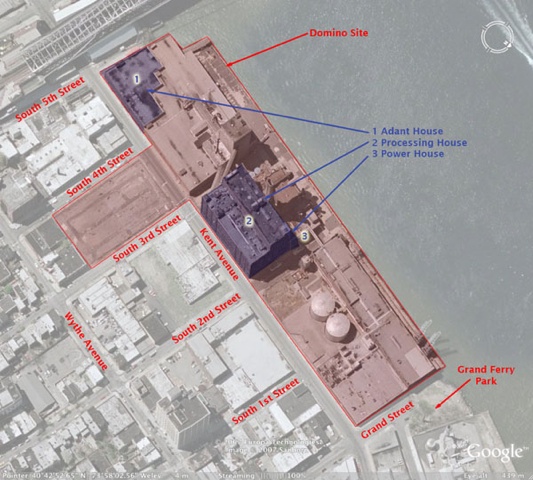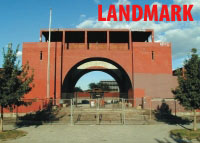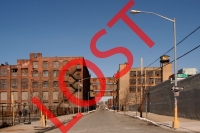Domino - The Big Picture
 WPA's recommendations for designation and preservation at the Domino site
WPA's recommendations for designation and preservation at the Domino site
Photo: Google Earth
The last piece of the Domino puzzle is the Power House, a tiny building, but a significant one, in that it dates to 1883 (when the entire site was rebuilt). It was thus part of a complex of industrial buildings that became the world's most efficient and prolific sugar making machine. The 1883 Power House replaced an older Havemeyers power house that still stands on South 4th Street. The new (1883) Power House is a tiny building that sits nestled amongst a number of later, larger infrastructure buildings - in fact, it often confused with the much larger Boiler House (ca. 1930), the six-story gambrel roof building that blocks much of the view of the Processing House from the river side. At two stories and less that 25' wide, the Power House is easily missed, yet it matches the architectural expression of the adjacent Processing House. In fact, the Power House retains its original corbelled and pedimented brick parapet, a design detail that has been stripped from the Processing House and the Adant House.
The ground floor of the Power House has been completely obliterated - replaced by a flat brick facade with a garage entry. Yet the building still retains significance for its decorative brick work and its functional and architectural role in the overall refinery complex. At the recent LPC hearing, the Commission's research staff noted that the plans for the new refinery were developed at least a year or two prior to the 1882 fire that destroyed the old Havemeyers refinery. It is certainly possible, then, that the Power House (and the Adant House) were not just ad hoc parts of a larger refinery complex, but carefully considered parts of a whole.
Like the other buildings in the refinery complex that WPA has been advocating for, the Power House is clearly architecturally and functionally consistent with the 1883 Havemeyers & Elder sugar refinery. And like the other buildings that WPA is advocating for, the Power House could easily be a contributing building within a residential redevelopment along the lines of that which CPC is putting forward. The Power House occupies a part of the project that is slated for open space. While preservation of this building would reduce the amount of public open space in the project, the building itself is small enough that it could serve to enhance this planned open space. It could function as a concession area, or remain as a partial ruin (a smaller version of the Tobacco Warehouse in Dumbo's Empire-Fulton Ferry state park). Certainly its retention would not be a significant economic burden, and nor would its retention take away from any planned affordable (or non-affordable) housing in the project.




